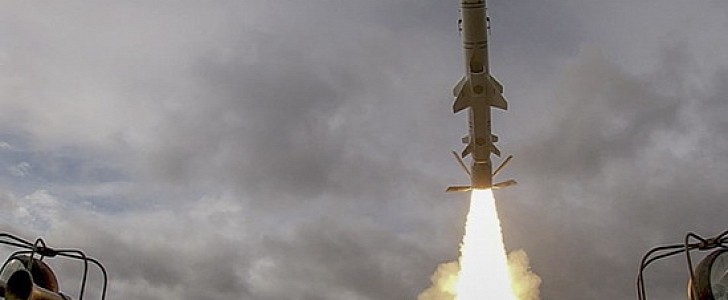“Every day is a good day to blow up mock enemies” seems to be the Russian Armed Forces’ motto. While some of its most fierce bombers and fighter jets were dropping bombs during the Zapad 2021 joint exercise with Belarus, its Northern fleet was gearing up for other military exercises, near the Arctic region.
Troops of the Northern fleet recently participated in a series of trainings that took place near the Franz Josef Land archipelago, in the Barents and Kara Seas, and the Laptev Sea, near the Novosibirsk Islands. According to an official statement, over 800 combat units and 8,000 servicemen were involved in this huge exercise.
Try to imagine 40 tanks, 50 ships, 460 armored combat vehicles, 120 aircraft and several rocket launch systems, all in one place, joining forces for simulated attack operations.
Tactical units at sea, plus units of land and coastal groups performed coordinated training tasks, including neutralizing attacks of illegal armed forces and intelligence missions, all with the greater purpose of defending Russia’s territories in the Arctic area.
Some of Russia’s greatest warships carried out missile attacks against mock enemy targets. The heavy nuclear missile cruiser Pyotr Velikiy, nuclear submarine missile cruiser Orel, the Marshal Ustinov missile cruiser and the Admiral Ushakov destroyer launched Vulkan and Moskit anti-ship missiles, in spectacular displays of power.
They were joined by coastal missile systems Bal and Bastion, which launched missiles against targets at sea, from the coast of several Arctic islands.
Acting as a “beehive”, the Bal coastal missile system stands out due to its massive salvo. It can aim missiles at six, 12 and even 24 targets at once. It boasts a 260 km (161 miles) fire range, and its passive radars are able to detect targets up to 450 km (280 miles) away. Bastion, on the other hand, is known for the supersonic speed of its missiles, which are meant for an “instant strike”, in addition to its impressive fire range of 300 km (186.4 miles).
A total of six of these spectacular sea- and land-based missile launches were successfully performed in the Arctic region.
Try to imagine 40 tanks, 50 ships, 460 armored combat vehicles, 120 aircraft and several rocket launch systems, all in one place, joining forces for simulated attack operations.
Tactical units at sea, plus units of land and coastal groups performed coordinated training tasks, including neutralizing attacks of illegal armed forces and intelligence missions, all with the greater purpose of defending Russia’s territories in the Arctic area.
Some of Russia’s greatest warships carried out missile attacks against mock enemy targets. The heavy nuclear missile cruiser Pyotr Velikiy, nuclear submarine missile cruiser Orel, the Marshal Ustinov missile cruiser and the Admiral Ushakov destroyer launched Vulkan and Moskit anti-ship missiles, in spectacular displays of power.
They were joined by coastal missile systems Bal and Bastion, which launched missiles against targets at sea, from the coast of several Arctic islands.
Acting as a “beehive”, the Bal coastal missile system stands out due to its massive salvo. It can aim missiles at six, 12 and even 24 targets at once. It boasts a 260 km (161 miles) fire range, and its passive radars are able to detect targets up to 450 km (280 miles) away. Bastion, on the other hand, is known for the supersonic speed of its missiles, which are meant for an “instant strike”, in addition to its impressive fire range of 300 km (186.4 miles).
A total of six of these spectacular sea- and land-based missile launches were successfully performed in the Arctic region.









